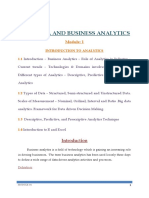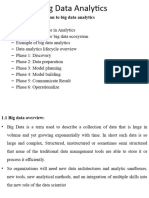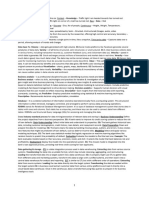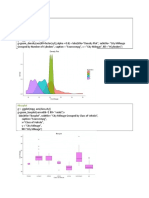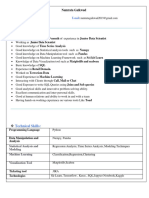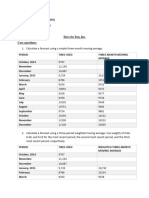0% found this document useful (0 votes)
109 views15 pagesToolKit 1 - Unit 1 - Introduction To Data Analytics
This document provides an introduction to data analytics, including definitions of key terms and concepts. It discusses what data is, the different types and phases of data processing, and the steps involved in data analysis. It also describes the components, life cycle, and types of data analytics. Finally, it covers topics like data collection methods, tools, factors to consider, and frameworks for data and analytics.
Uploaded by
SHIVAM MathurCopyright
© © All Rights Reserved
We take content rights seriously. If you suspect this is your content, claim it here.
Available Formats
Download as PDF, TXT or read online on Scribd
0% found this document useful (0 votes)
109 views15 pagesToolKit 1 - Unit 1 - Introduction To Data Analytics
This document provides an introduction to data analytics, including definitions of key terms and concepts. It discusses what data is, the different types and phases of data processing, and the steps involved in data analysis. It also describes the components, life cycle, and types of data analytics. Finally, it covers topics like data collection methods, tools, factors to consider, and frameworks for data and analytics.
Uploaded by
SHIVAM MathurCopyright
© © All Rights Reserved
We take content rights seriously. If you suspect this is your content, claim it here.
Available Formats
Download as PDF, TXT or read online on Scribd
/ 15


























